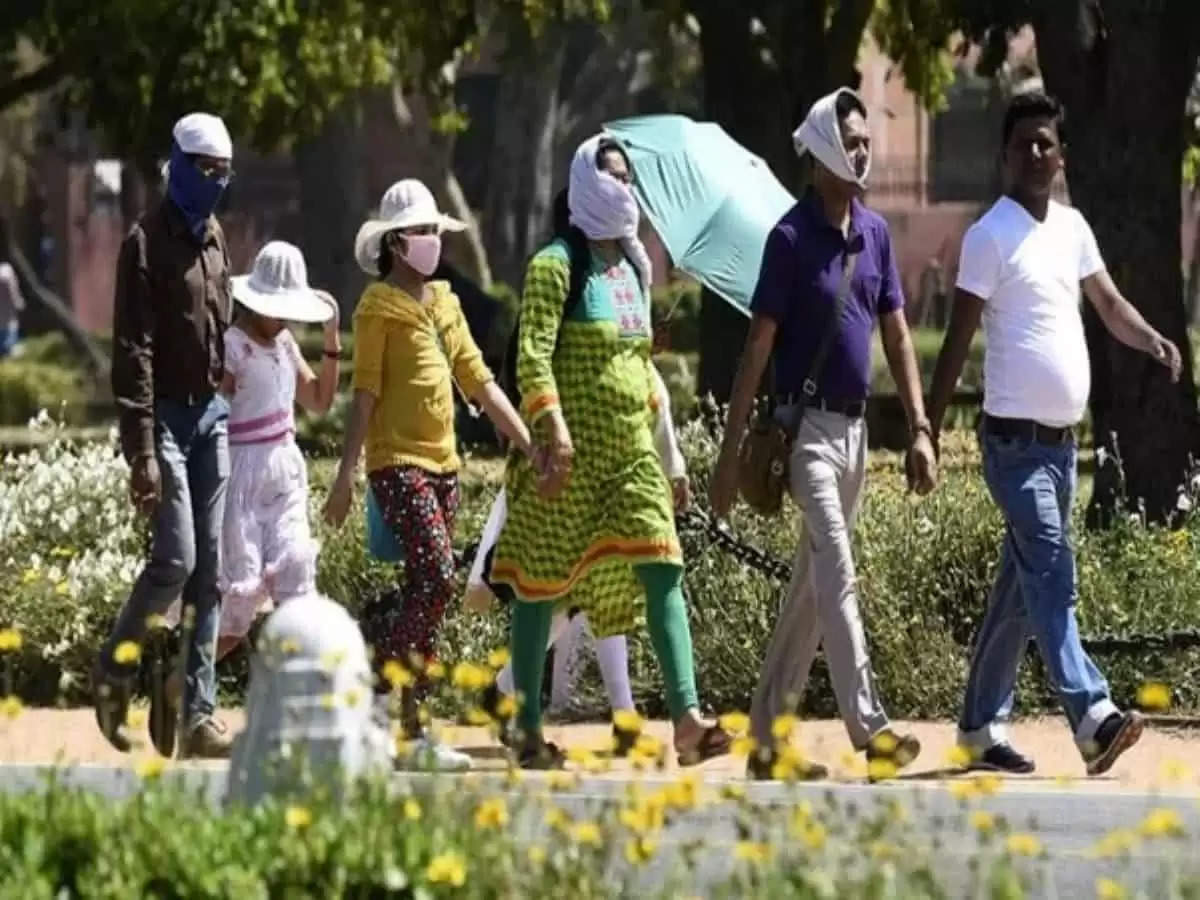Study: 90% of India and all of Delhi are in the "danger zone" for the effects of the heatwave.
Despite the fact that Delhi's most current state action plan for climate change does not include it, the study also showed that Delhi is particularly susceptible to the effects of extreme heatwaves.

In New Delhi: According to a recent study, heatwaves are growing more common and severe in India as a result of climate change, with over 90% of the nation being in the "extremely cautious" or "danger zone" of their effects.
Ramit Debnath and colleagues at the University of Cambridge performed the study, which also showed that Delhi is particularly susceptible to the effects of extreme heatwaves, despite the fact that its most current state action plan for climate change does not take this into account.
It was suggested that India's progress towards achieving the Sustainable Development Goals (SDGs) had been hampered by heatwaves more than was previously believed, and that the metrics used for current assessments might not adequately account for the effects of heatwaves linked to climate change on the nation.
According to a research written by scientists Kamaljit Ray, S S Ray, R K Giri, and A P Dimri together with M Rajeevan, a former secretary of the Ministry of Earth Sciences, more than 17,000 lives were lost in India due to heatwaves over the course of 50 years.
According to a report released in 2021, the nation saw 706 heatwave occurrences between 1971 and 2019.
One of the biggest heatwave-related death tolls in country history occurred on Sunday during a Maharashtra government awards ceremony in Navi Mumbai, where 13 people perished from heatstroke.
Researchers at the University of Cambridge undertook an analytical study of the nation's heat index together with its climate sensitivity index in order to gauge India's climate vulnerability and the potential impact of climate change on SDG development.
To determine severity levels, the researchers used a publicly accessible dataset on state-level climate risk indicators from the National Data and Analytics Platform of the government.
They then contrasted India's progress towards the SDGs over a 20-year period (2001–2021) with deaths caused by extreme weather during the same period.
More than 90% of India is in the "extremely cautious" or "danger" category for heatwave consequences through HI, compared to "low" or "moderate" susceptibility through CVI, according to the research. States with "low" CVI rankings were discovered to be in "danger" HI categories, showing that heatwaves put more people in India at risk from harsh climate than CVI had predicted.
The authors came to the conclusion that the usage of CVI could understate the true impact of climate change on heat, and they offered several suggestions.
They cautioned that if India does not promptly address the effects of heatwaves, progress towards reaching sustainable development goals may be slowed.
The report also made note of the fact that HI estimates are not currently included in the heat-action plans developed and put into place in accordance with the Delhi government's vulnerability assessment, which is alarming given that even Delhi's "low" climate-vulnerable districts face significant risks from heatwaves. According to the study, the high levels of growth in the Central, East, West, and North-East districts increase the danger of HI through the establishment of heat islands. According to the authors, slum population concentration and congestion in high HI regions, lack of access to basic facilities like power, water, and sanitation, and lack of availability of shade are some of the key factors in Delhi that would exacerbate heat-related vulnerabilities.
In the majority of central, eastern, and northwest India, days with above-normal temperatures are anticipated. India had the warmest February since records have been kept, which was in the year 2023. But March's above-average precipitation helped to keep temperatures in control.
It was the third hottest and wettest March in 121 years in 2022. The third-warmest April in the nation since 1901 also occurred in this year. Around 380 million individuals in India who are employed endure heat-related stress. According to a research by the McKinsey Global Institute, if this trend continues, the nation might lose 2.4 percent to 4.5 percent of its GDP annually by 2030.
.png)